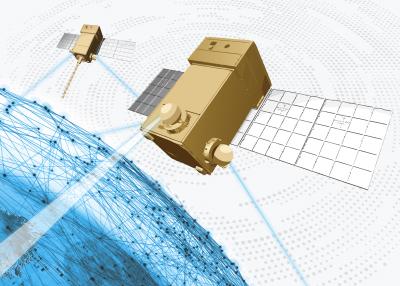
Looking to roll out a network of 36 small, Tranche 2 Transport Layer (T2TL) Beta satellites to advance its communications, the Space Development Agency (SDA) awarded Lockheed Martin a firm-fixed price contract of approximately $816 million this week.
That contract will cover three dozen Tranche 2 Transport Layer (T2TL) Beta satellites. While working in tandem with SDA’s Tranche 1 and Tranche 2 networks, their intended purpose is to improve fighting capabilities through targeted technology enhancements, payload configurations and increased integration. They also fit into a larger plan to improve beyond line-of-sight (BLOS) targeting, data transport and advanced missile detection and tracking.
“Tranche 2 will significantly enhance our warfighters’ capabilities and establish new levels of resiliency, connectivity, and orbital diversity that are necessary for countering future threats,” Joe Rickers, Lockheed Martin’s vice president for Protected Communications, said. “SDA’s unique acquisition approach expedites the proliferation of this critical technology, and Lockheed Martin’s strategic partnerships with a network of suppliers and small businesses will ensure we’re aligned with SDA’s strategy for accelerated delivery.”
When finished, the T2TL Beta program will consist of 72 satellites deployed into orbit steadily beginning in 2026. Through the new award, though, Lockheed Martin will be tasked with delivering at least 88 data communications satellites for low-Earth orbit. Of these, 10 Tranche 0 Transport Layer satellites will launch this year, while 42 Tranche 1 satellites are in production for a 2024 launch.
This work will be aided by a new 20,000 square-foot small satellite processing center Lockheed Martin opened this month in Colorado. At that facility, workers will serve on six parallel assembly lines and utilize dedicated test chambers to create 180 satellites or more each year.




